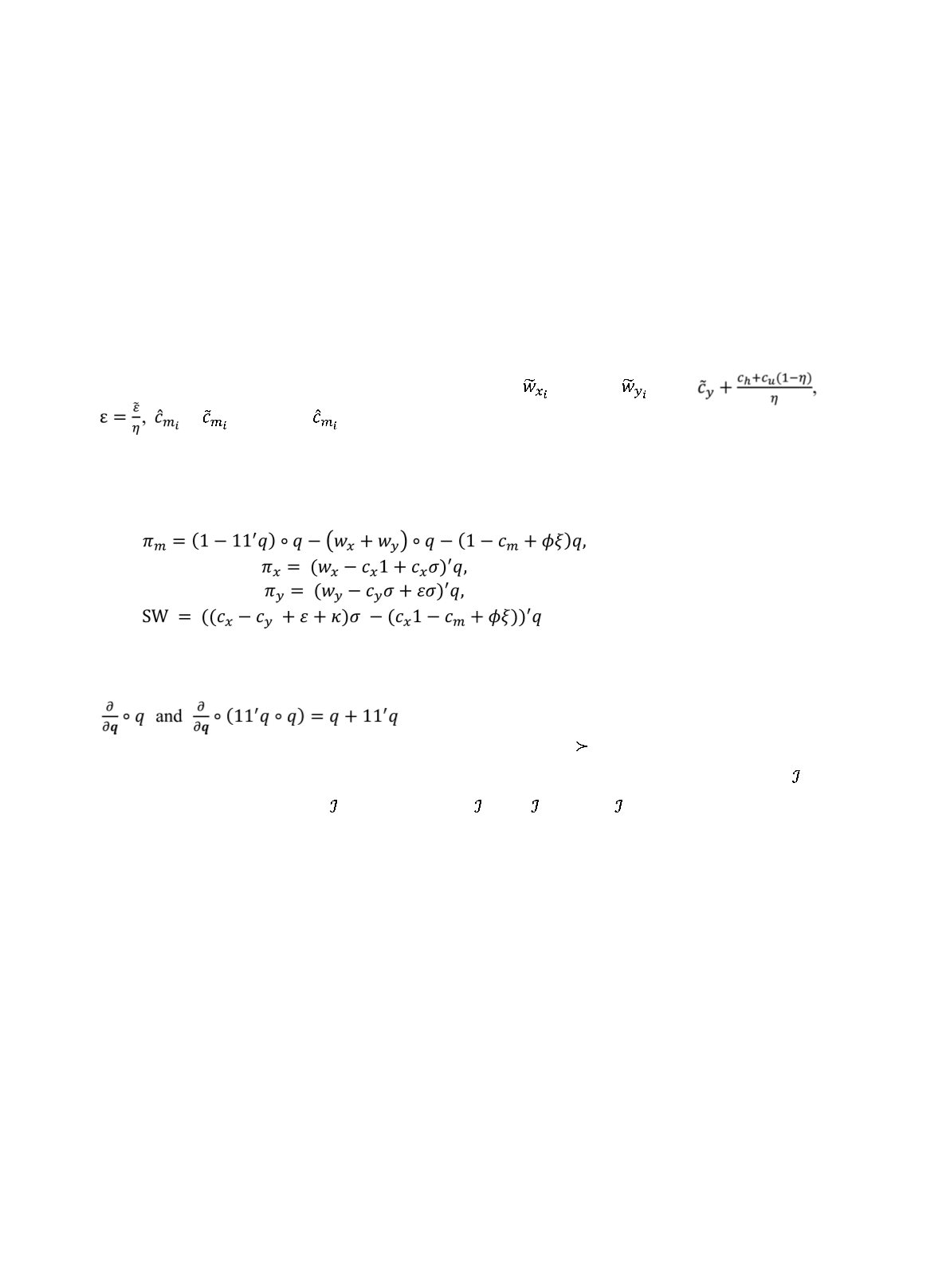

臺大管理論叢
第
27
卷第
2
期
169
widely used in previous literature focused on green policy determination (Dobbs, 1991;
Walls and Palmer, 2001), we argue that the main items considered in the government’s
objective function are as follows: (1) consumer surplus (CS); (2) producer surplus (PS); and
(3) environmental cost (EC). Therefore, the government’s objective function is
SW
=
π
CS
+
π
PS
+
π
EC
, where
π
CS
= (∑
q
i
)
2
,
π
PS
=
π
m
+
π
x
+
π
y
,
π
EC
=
κ
∑
σ
yi
q
i
, and
κ
represents the environmental
benignity factor for applying EDRM.
We can further simplify the representation further by representing in matrix form and
substituting in variables with terse forms. Let
w
xi
=
σ
xi
,
w
yi
=
σ
yi
,
c
y
=
=
–1,
c
mi
= – ,
σ
yi
=
σ
i
, and
σ
xi
= 1 –
σ
i
. Note that
c
mi
< 0. Vectors are written
in fold face fonts, i.e.,
w
x
= (
w
xi
)
i
=1...n
,
σ
= (
σ
i
)
i
=1...n
and
c
m
= (
c
mi
)
i
=1...n
. Substitute the notations into
the original problem and we have the following abstract expression:
Recall that the differentiation in the Hadamard product has the following relations,
, where 1 and I are unit vector and identity matrix,
respectively, and (·)' denotes a vector transpose. The operator represents a component-wise
comparison. For simplification of notation, we introduce a demand conversion matrix =
(I+11')
-1
, with properties 1'
=
(n+1)
-1
1
-1
, 11'
= I– , and 1'
1=
n
(n+1)
-1
. In the next
section, we will show this matrix serves a similar purpose of a demand function that converts
price to production quantity.
4. Policy Frameworks
This section demonstrates the effectiveness of a tax-subsidy mechanism for recycling
EDRMs. We rationalize the decision-making process among governments and green supply
chain members. In the hierarchical game context, all parties observe the intensity of
incentives implemented by governments (e.g., environmental management fees and taxes).
Further decisions are made by all material suppliers in competitive green supply chains in
response to the government agency. The product market finally speculates about the potential
decisions of green supply chain members in the process of determining the optimal
competitive production quantities. We maximize the social welfare in the entire closed-loop


















